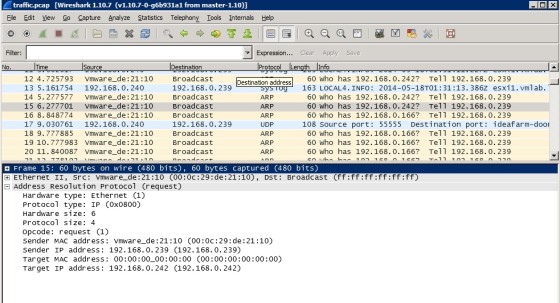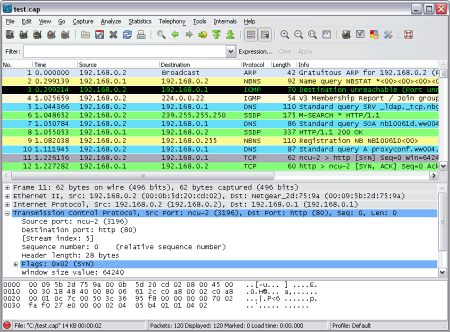


To test network connection (for hosts connected to local network) even when an IP firewall is configured on the remote host (in other words: you can ARP-ping a locally connected Windows host even when the windows firewall is active) " ARPing", as a very easy way to send ARP-request and check for ARP-reply. " ARP spoofing/poisoning", regarding " denial of service" / " man in the middle" / " session hijacking" attacks you might be suffering

" gratuitous ARP", that follows a reverse schema with respect to the common ARP-Request=>Arp-Reply you're testing Anyway you might find useful to briefly investigate: Unfortunately it's not clear, to me, which is exactly the problem you're trying to solve. as every host on your LAN is configured with a different IP address (unless, again, your "Google") every host will discover that it contain an ARP-request for 173.194.46.72. Every host on your LAN will phisically receive and process the broadcast frame generated by your ARP-request.broadcast domain Įven tough you can surely ARP-request for whatever IP you prefer (Google's 173.194.46.72 included), you're _NOT_ going to receive any ARP-reply (unless ".Google is on your LAN.", as mentioned in M.Hampton comment above), 'cause in such a case: An ARP-request tipically is sent via a "broadcast" ethernet frame. You're _NOT_ getting an ARP-reply, 'cause within your broadcast domain (aka: your local LAN segment) there is _NOT_ an host whose IP address is the one you're ARPing for (173.194.46.72).ĪRP is a Layer-2 protocol and as such, as already mentioned by Zoredache: ". This is why I am relatively confident that the other fields in the packet are correct, since I really didn't modify them.ĭoes anyone know what might be the problem here? One thing I'm sort of noticing is that I don't have my router's IP address (192.168.1.1) anywhere in that packet not really sure whether I need that or not. One thing to note is that I am building this packet by intercepting an ARP request sent to a virtual network interface (the packet is generated when I use the ping command from within the virtual netspace), then rewriting the packet and injecting it on wlan0 using pcap, so that I can later get the ARP reply and forward it back to the virtual network. However, I am not seeing any ARP replies containing Google's IP whatsoever. Using Wireshark to listen on wlan0, I expect to see an ARP reply giving me the MAC address of a Google server. Using pcap_sendpacket in C, I'm manually sending the following packet on wlan0 (I've left out some fields, but I think they are correct): (Ethernet layer)


 0 kommentar(er)
0 kommentar(er)
